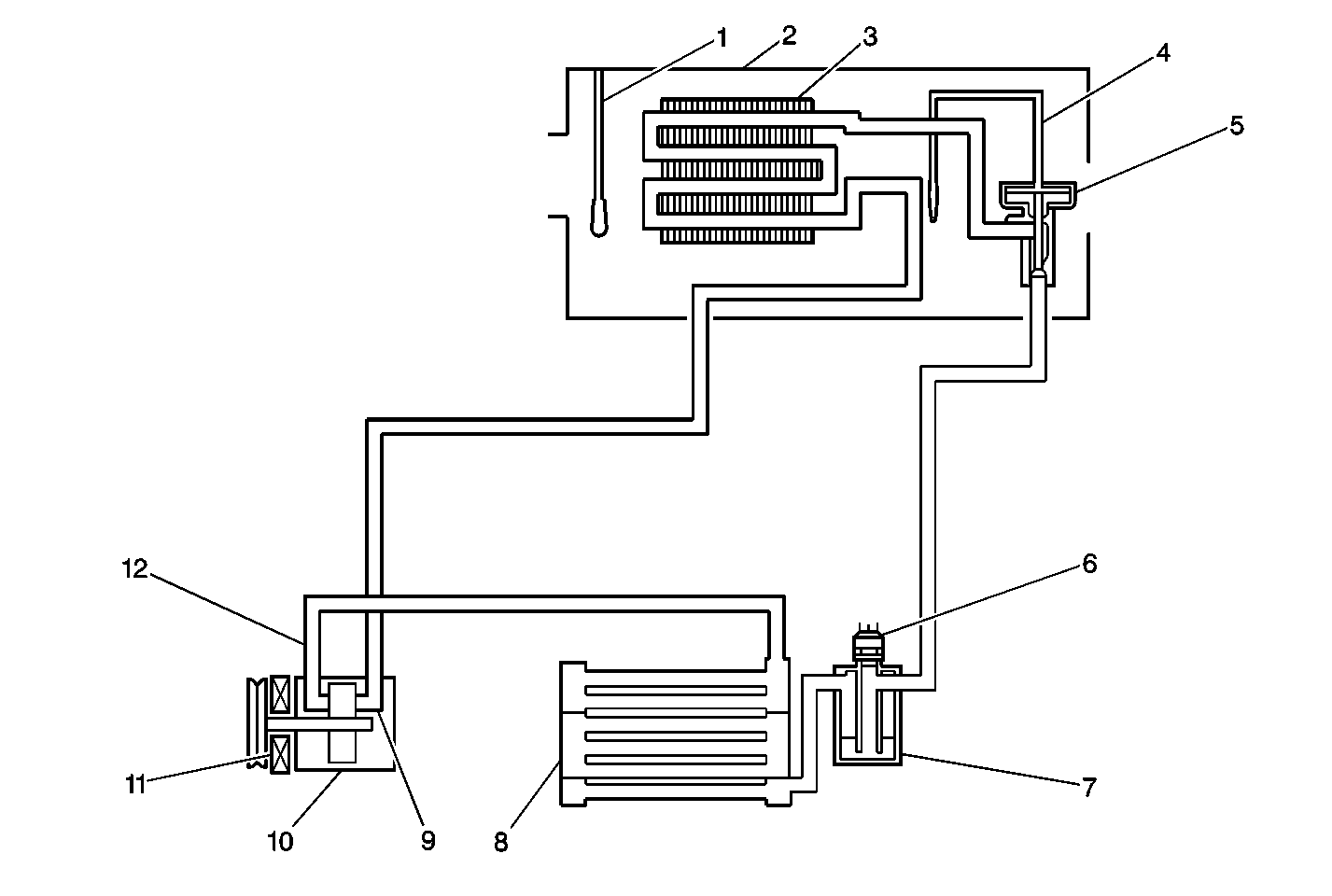The system contains a refrigerant. The refrigerant is either a gas or a liquid, depending on the temperature and the pressure. The refrigerant is a heat exchange medium.
Heat is required to change the liquid refrigerant (134a) into a gas.
When the R-134a refrigerant changes from a liquid to a gas in the evaporator (3) , the vehicle cab cools.
The air that passes through the evaporator transfers heat to the R-134a refrigerant. The R-134a refrigerant absorbs the heat and changes into a gas. The blower motor circulates the air in the cab.

The following steps occur in the refrigerant cycle:
- The refrigerant cycle starts at the compressor (10).
- The refrigerant is compressed to a high pressure, high temperature gas.
- The gas flows through the condenser tube.
- The gas transfers heat to the cooler air that is passing through the condenser cooling fins (8).
- The high pressure, high temperature gas changes into a high pressure, high temperature liquid.
- The high pressure liquid passes through the receiver/dryer or dehydrator.
- The liquid refrigerant flows through the expansion valve (5).
- The refrigerant changes to a low pressure, low temperature liquid in the evaporator (2).
- Warm inside air flows through the cooler evaporator core or fins (3).
- The low pressure vapor returns to the compressor.
- The cycle begins again.
The refrigerant is a low pressure, low temperature gas when it enters the compressor.
The following actions occur in the receiver/dehydrator (7):
| 6.1. | A screen filters the refrigerant. |
| 6.2. | A desiccant removes moisture from the refrigerant. |
| 6.3. | The receiver/dryer or dehydrator also stores the refrigerant. |
The warm air transfers heat to the low pressure, low temperature liquid in the evaporator and the low pressure liquid becomes a low pressure gas.
